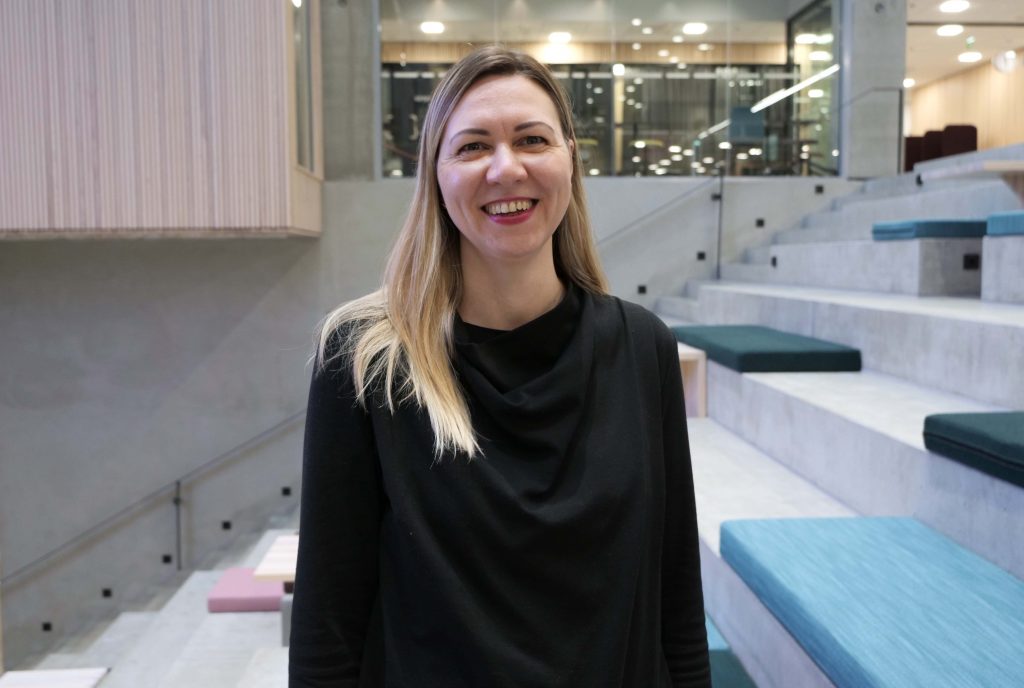While the value of face-to-face interaction to business relationships has never been open to dispute, it has become apparent in…
Tekijät | Authors

A leap to the Horizon – How did we manage?
In November 2017, Anita Narbro took a great leap towards something new and exciting. For the very first time, Turku University of Applied Sciences was about to coordinate a Horizon 2020 project, one that was also described as the best proposal in its application round of the highly competed funding programme.
Four years, dozens of publications, countless emails across Europe, nine co-creation pilots, and one pandemic later, project CoSIE – Co-creation of Service Innovation in Europe, is coming to an end. With an ambitious goal of democratizing decision-making in public services in Europe, the CoSIE project was implemented as a joint venture of 24 partners from 10 EU countries.
Anita, as the administrative project manager, had a key role in making sure the project ran as smoothly as possible from the beginning until the end. So, how did we manage?
“In Horizon, the coordinator’s role is very different compared to other international funding programmes, it’s a lot more demanding. Throughout the course of the project, we had many challenges that took considerable effort and stamina to solve. However, one of the big lessons was learning to communicate with the commission and, in the final review, CoSIE was praised for presenting a very clear message.”
Never ready, never alone
Horizon 2020 was the biggest EU Research and Innovation programme with nearly €80 billion of funding available over the course of seven years (2014 to 2020). Before CoSIE, Turku UAS had partnered in many Horizon projects, but there was no previous experience in leading a project of this magnitude.
In addition to an outstanding project idea, the funding programme required a lot of work and commitment already in the preparation phase. When asked to lead the project as an administrative project manager, Anita didn’t hesitate.
“Since the early days of my career, I’ve been interested in the Horizon programme, and I’ve had it as my ambition to become an expert in it. So, for me it felt like the perfect opportunity even though I knew it wasn’t going to be easy.”
Indeed, managing a budget of 5 000 000 EUR and a project consortium of 24 partner organizations in 10 European countries doesn’t sound like a piece of cake. How does one prepare for such a task?
“I’ve been preparing for this for years through my studies and work. I think you need to have experience and problem-solving skills to build on, before you jump into a massive project like this.”
The main learnings come from human interaction.
Reflecting on her professional development as a project manager, Anita finds that it’s key to understand that you are never ‘ready’. No matter how many project management tools you handle, there’s always more to learn and the main learnings come from human interaction. In CoSIE, Anita has made more tough decisions than in any of her previous projects.
“Although I still hate decision-making!”, Anita laughs.
“I get the strength from this collaborative way of working. At Turku UAS I wasn’t working on the project alone. Instead, we had a team of experts, and I could always trust their knowledge and support in difficult times. I don’t feel like I’ve had to make single-minded decisions or be alone in difficult situations.”
PM pitfalls and triumphs
During the implementation of CoSIE, the project partners tested and developed co-creation methods in the field of public services. This included organizing pilots where service providers and citizens actively engage in the design of public services.
The COVID-19 pandemic brought additional challenges into engaging the often called ‘hard to reach’ end-users of public services, who were the main target group of CoSIE.
However, moving to a fully online collaboration mode mid-way through the project wasn’t all bad.
“In a way I feel that the lockdowns across Europe made our project consortium’s decision-making more democratic – before, the Turku UAS group would sit in one room while others participated in the online meetings individually. But once everyone joined the meeting alone from their home office, we listened to each other more and the meetings became more equal and inclusive for all.“
Another obstacle from the project manager’s perspective was that Turku UAS did not really have a clear, set methodology regarding project management. The European commission is used to big organizations that have very rigid project implementation methodologies.
“In that competition we were just not cutting the edge. However, I was grateful to our management that they were responsive to the commission’s feedback and took a quick decision to start internal development in this aspect. The work is of course continuing, but nowadays more and more Turku UAS projects are based on the Pm2 methodology” Anita rejoices.
The CoSIE project got an extension of six months because of the pandemic. This helped plan the project’s local implementation across Europe in new ways.
People were very good at finding solutions once they accepted the situation.
“At first people were in denial; we believed that in a few months we can go back to normal. But as we know, ‘normal’ didn’t come back and we had to come up with other ways of working. Luckily, we had some tech-savvy members in our consortium, and people were very good at finding solutions once they accepted the situation.”
Looking for new Horizons
Turku UAS’ project management office (PMO) has a broad experience in coordinating international research, development and innovation projects.
In the new Horizon Europe programme, with a total budget of 95.5 billion EUR, projects are expected to become more and more impact based. That means that partners like Turku UAS, working with companies and close to market entry point of products, are exactly what is in demand.
“At this point Turku UAS is involved in nine Horizon preparations – that is more than ever before at one time. Our Horizon team could not be happier about this development, it just shows that we have been moving the right way and that all our efforts have not gone astray”, says Anita.
Kaisa Adair, the Head of Project Management Office, is equally excited about the opportunities of the new Horizon.
”The Horizon experts at the PMO of Turku UAS have been working on many organizational and functional improvements in order to respond to the requirements of the new Horizon Europe projects. PMO is also rapidly growing as a unit: The need for Horizon expertise has grown as the number of project preparations has increased. Recently PMO has recruited a new chief advisor to join its workforce in January 2022.“
Anita Narbro’s four pieces of advice for Horizon ‘rookies’
- Focus on building a good team from day one. Share responsibilities and make sure everyone knows their role in the project.
- Recognize the scale of the project: How many people do you need from your organization? What kind of support will you need from the management? Sometimes you need decision-makers from your organization to have your back.
- Invest in (intercultural) communications. Even in Europe there are so many cultures, and some cultures immediately crash. Involve people from different backgrounds in planning of the communications.
- When forming a project consortium, it’s good to have partners you know and rely on. But make sure you also include new partners, to foster the innovation aspect.
Research, development and innovation is our core business.
Are you interested in collaborating in projects that make an impact?
Get to know our ongoing projects and let us hear from you!
Photo: Laura Koskinen








